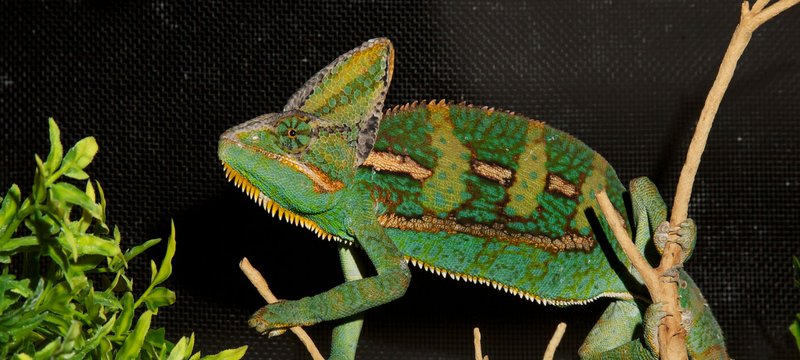
So, how did the veiled chameleon get to where it is now? Let’s take a closer look at its fascinating journey through time. From ancient ancestors to the modern-day chameleons we see in terrariums, understanding their evolution is key to appreciating their role in the ecosystem and their unique behaviors.
Origins of Chameleons
The history of chameleons dates back over 60 million years. They belong to the family Chamaeleonidae, which is distinct for its remarkable adaptations and behaviors. The earliest chameleons likely roamed the earth when dinosaurs were still a prominent part of the fauna. Interestingly, these reptiles are believed to have evolved from lizard-like ancestors in Africa, slowly spreading to various parts of the world.
Over time, chameleons developed unique features that set them apart from other reptiles. These include their specialized zygodactylous feet, which allow them to grip branches firmly, and their long, sticky tongues designed for capturing prey. It’s almost like nature equipped them with the ultimate survival kit! The veiled chameleon (Chamaeleo calyptratus), specifically, hails from Yemen and Saudi Arabia, showcasing how geographical factors influence evolutionary traits.
Adaptations for Survival
The veiled chameleon is a master of adaptation, and it owes its vibrant color changes to a combination of factors. Color change in chameleons serves multiple purposes; it can indicate mood, help regulate temperature, and communicate with potential mates. Imagine being able to change your outfit to suit your feelings or the weather! This ability is made possible by unique pigment cells called chromatophores in their skin.
Additionally, their cryptic coloration enables these reptiles to blend seamlessly into their surroundings, evading predators and sneaking up on prey. This survival strategy is critical in the wild, where they face numerous threats. Honestly, if you saw one hiding among the leaves, you might think it was just another twig or leaf!
The Role of Climate and Habitat
Chameleons, including the veiled variety, thrive in warm, arid climates where there’s plenty of vegetation. Their evolutionary journey has been shaped heavily by habitat. In the wild, they prefer areas like deserts, rainforests, and scrublands, where they can spot both predators and prey.
Changes in climate over time have influenced where chameleons can live. For instance, as the climate shifted and habitats altered, these reptiles had to adapt or move to survive. The veiled chameleon, which is more tolerant of dry environments compared to other species, has benefited from these adaptations. It’s like learning to dance in the rain—if the conditions change, you’ve got to change with them!
Modern-Day Challenges
Today, veiled chameleons face numerous challenges, many of which are linked to human activity. Habitat destruction, climate change, and the illegal pet trade have led to declining populations in the wild. It’s worrying to think how these charming creatures’ homes are being lost due to deforestation and urban development.
Conservation efforts are crucial for their survival, but it often requires balancing human needs with wildlife preservation. Zoos and wildlife organizations are working hard to educate the public and protect these creatures. This is where we can all play a part—understanding their needs and advocating for their habitats can make a difference.
The Importance of Understanding Their Evolution
Understanding the evolutionary history of the veiled chameleon gives us insight into their behaviors and adaptations. It reminds us of the delicate balance in nature and how even the smallest changes can have lasting effects. You might even find it inspiring to think about how these reptiles have survived for millions of years, evolving along the way.
When we dive into their past, we’re not just looking at a timeline; we’re seeing a story of resilience. It’s a narrative filled with survival, adaptation, and the relentless pursuit of life in ever-changing environments.
The evolutionary history of the veiled chameleon is nothing short of fascinating. From their ancient ancestors to the vibrant creatures we see today, every aspect of their being tells a story of adaptation and survival. As we continue to learn about these reptiles, we can appreciate their role in our ecosystems and the importance of conservation.
So, the next time you see a veiled chameleon, remember that it’s not just a colorful pet; it’s a living testament to millions of years of evolution. By understanding and preserving their habitats, we can help ensure that future generations get to experience their beauty and uniqueness. Let’s celebrate these remarkable creatures and the incredible journey they’ve taken through time!
